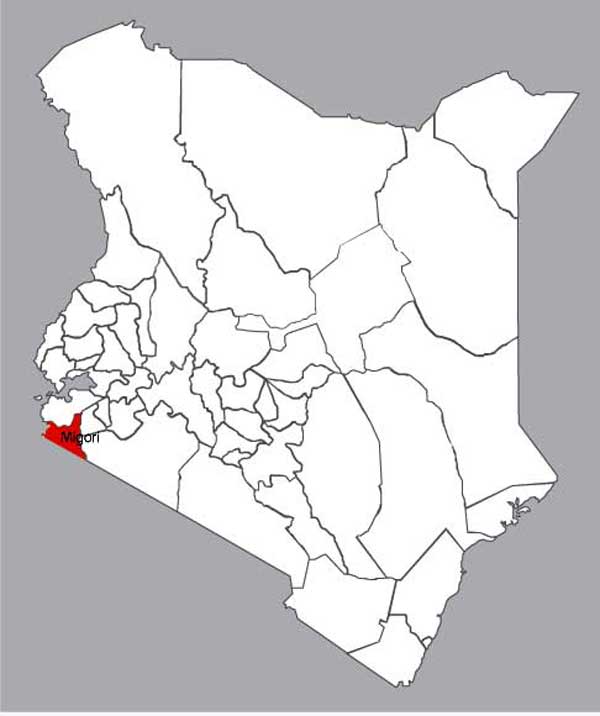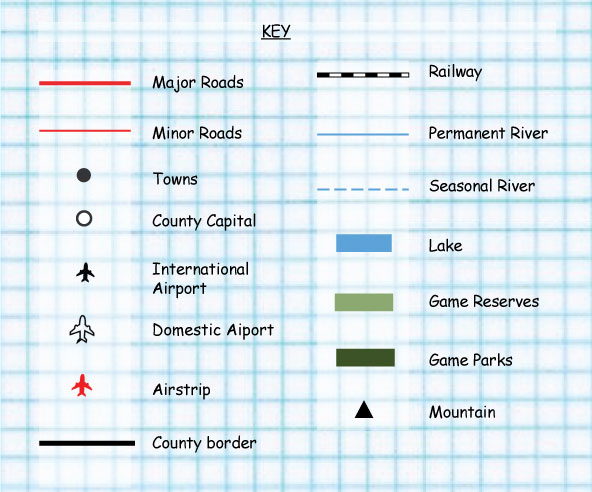Migori County is a county in the former Nyanza Province of southwestern Kenya. Migori County is located in Western Kenya and borders Homa Bay to the North, Kisii to the North East, Narok to the East and South East, Tanzania to the South and South West and Lake Victoria to the West.The capital is Migori town which is also its largest town.

It consist of four constituencies:
Rivers
Lakes
Hills
Valleys


Traditional Luo diet consists of Ugali made of sorghum or millet accompanied by fish, meat, or vegetable stews.
Many ornaments were made of local natural products like animal and wood products. They ranged from headdresses and necklaces to armlets and other items such as leather aprons ( pien nyadiel ), waist aprons ( olemo/chieno ), cowry shell belts ( okanda gaagi ), bead necklaces ( tik ng'ut ), hippo tusks ( lak rao ) armlets and wrist bangles ( minyonge )
Ohangla is a traditional dance in the Luo community. It was used in weddings and also in funeral ceremony as part of Tero Buru. Ohangla consists of 8 drums hit by a stick or more and a cylindrical shoulder slung drum played normally to the accompaniment of flute, Nyatiti or kinanda. Tony Nyadundo, Osogo Winyo and Onyi Papa Jey are among the best known Ohangla musicians.The original Ohangla has very fast tempo nature and vulgar messages convey in the music. Local elders used to ban ohangla music in the early 80’s. Because the music was meant for adults. Children or teenagers were not allowed.
Consensual core of Luo plant medicine is known by ordinary mothers and their children as well as by known healers. It is a shared resource, that is used by women, mainly in the care for their children, and it is not an expert domain of knowledge.
This was done a few days after birth, by the parents of the child. They named their children after their dead relatives, the time and the season the child was born, and if a mother conceived without seeing her periods. Children born at a certain time were named after that time, i.e. Otieno/Atieno, these are children born at night, Okoth/Akoth born during rainy season, Okumu/Akumu born without the mother seeing her periods.
They are among the few communities in Kenya that do not circumcise their male children as a move to manhood. Instead, in Luo traditions, initiation involves the removal of six teeth from the lower jaw.
After harvesting it was the first wife and the husband who had to be the first to eat the newly harvested crops. Where a man had only one wife as opposed to being polygamous, then everything was done with just his sole wife
Traditionally, music was practiced widely in the Luo society. Music was made anytime of the day. Music was not played for its own sake. Music was functional, being used for ceremonial, religious, political, or incidental purposes. Music was performed during funerals (Tero buru), to praise the departed, to console the bereaved, to keep people awake at night, and to express pain and agony. Also, it was used during cleansing and chasing away of spirits. Music was also played during ceremonies like beer parties (Dudu, ohangla dance), welcoming back the warriors from a war, during a wrestling match (Olengo), during courtship, etc. Work songs also existed. These were performed both during communal work like building, weeding, etc. and individual work like pounding of cereals, or winnowing. Music was also used for ritual purposes like chasing away evil spirits (nyawawa), who visit the village at night, in rain making, and during divination and healing
Some of the Ramogi dance movements might resemble a bird taking off or circling in flight; part of the dance is inspired by the movements of the ostrich and the crested crane.